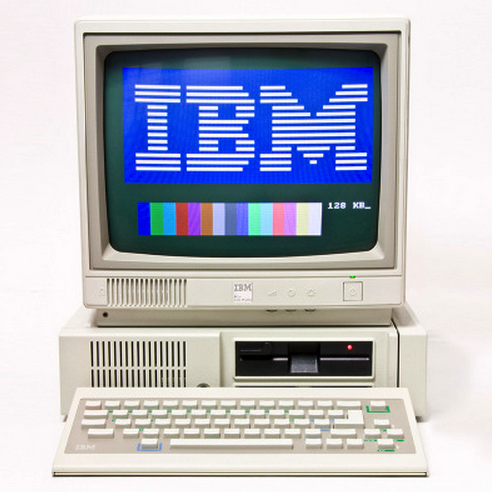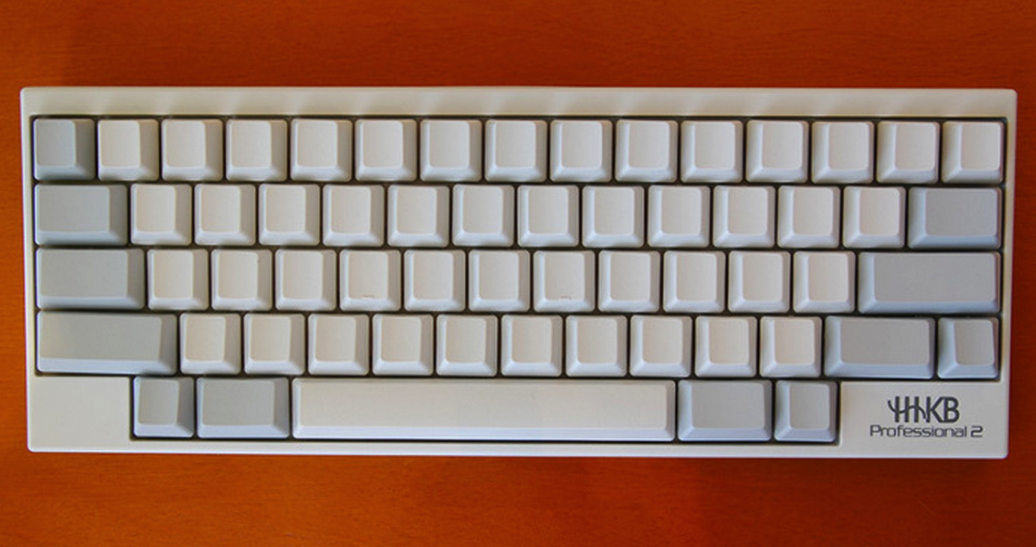12 episodes from the history of the keyboard
- Transfer
Every day we use the keyboard, both physical and virtual - on the displays of smartphones and tablets. Let's recall some interesting episodes from the history of this wonderful invention.

The QWERTY layout was not created so that we remember it better and faster. It was created in order to protect mechanical typewriters from breakdowns: everything depended on the frequency of use of specific characters.
But an alternative layout, more effective, was developed by Dr. Augustus Dvorak in the 1930s. The characters were arranged in such a way as to maximize the speed of printing so that the fingers did not make unnecessary movements. This keyboard was patented in 1936.

PCD Maltron entered the input device industry in 1977. Many models have been developed to combat illnesses and for the convenience of people with disabilities. For example, this photo shows a one-handed keyboard created in 1989.

It is much more convenient to type when you clearly feel each key. In the 1980s, however, there was a short period of time when a membrane keypad was used. This format was cheaper to manufacture, since no keys were needed. In addition, it was resistant to water and dust. This budget input interface included small and portable computers like the Sinclair 1000 and Sinclair ZX81.
At the same time, this type of input is still used in commercial and consumer devices - for example, in the control panel of microwave ovens.

After the success of business-oriented PCs, IBM made an attempt to capture the home computer market with the 1984 model PCjr. One of the key “features” was “Freeboard” - “free keyboard”. The wireless keyboard was powered by four AA batteries and was in contact with a computer using an infrared beam.

In 1984, Apple II, the "portable" personal computer, was launched. The keyboard included a button that allowed you to switch between the default QWERTY layout and the alternative Dvorak Keyboard, which was mentioned at the beginning.

In the 1980s, long before the current “smartwatch” hysteria, computers began to shrink to the size of wrist form factors. The Seiko Data 2000 and UC-2000 models could store two thousand characters in memory, but they still needed a keyboard. Both of these models came with a portable keyboard.

The 1985 IBM Model M, a computer, was the workhorse focused on the corporate segment. The keyboard with its 100-plus keys was very convenient. A special mechanism for pressing keys made this keyboard a classic.
The spring immediately after pressing returned the key to the place with a characteristic click.

While Model M had many keys, in the Happy Hacking Keyboard their number was reduced to 60. Only the most necessary remained. This compact keyboard has been manufactured at Fujitsu since 1996.

To print on earlier PDAs wasn’t so painful, Think Outside developed a full-size Stowaway keyboard for them. It was a kind of docking station for PDAs, allowing the user to comfortably type on normal keys. When the device was not needed, it developed, taking up not much space.

In 2002, Canesta startup, who lived in Silicon Valley, wanted to take keyboard portability to a new level, depriving it of its physical embodiment. The infrared sensor was supposed to monitor the movements of the user's fingers.
The company licensed the technology to another firm - Korean Celluon, which has implemented this technology in various devices like evoMouse, Prodigy case and projector for iPhone, as well as Magic Cube (now called Epic). In 2010, Canesta was bought by Microsoft.

Both projection and virtual keyboards have one drawback: there is not enough feedback. Of course, vibration can be turned on, but you won’t be better at distinguishing keys from this.
Tactus hopes to solve this problem. Tactile pixels “tiksels” will protrude, and when the keyboard is not needed, come back, making the display flat again.

We saw keyboards optimized for programmers and office workers, but here's a version for gamers.
Keyboard 2012 Mad Catz STRIKE 7 has ample opportunities for customization, as well as many additional keys. Many additional components, including an LCD touch screen, turn this keyboard into more than just an input device.

And these two keyboards are designed for video editing. We migrated to the post from the comments, thanks to Shultc .



The legend of two layouts
The QWERTY layout was not created so that we remember it better and faster. It was created in order to protect mechanical typewriters from breakdowns: everything depended on the frequency of use of specific characters.
But an alternative layout, more effective, was developed by Dr. Augustus Dvorak in the 1930s. The characters were arranged in such a way as to maximize the speed of printing so that the fingers did not make unnecessary movements. This keyboard was patented in 1936.

Ergonomic Topography
PCD Maltron entered the input device industry in 1977. Many models have been developed to combat illnesses and for the convenience of people with disabilities. For example, this photo shows a one-handed keyboard created in 1989.

Losing keys
It is much more convenient to type when you clearly feel each key. In the 1980s, however, there was a short period of time when a membrane keypad was used. This format was cheaper to manufacture, since no keys were needed. In addition, it was resistant to water and dust. This budget input interface included small and portable computers like the Sinclair 1000 and Sinclair ZX81.
At the same time, this type of input is still used in commercial and consumer devices - for example, in the control panel of microwave ovens.

Freedom from wires
After the success of business-oriented PCs, IBM made an attempt to capture the home computer market with the 1984 model PCjr. One of the key “features” was “Freeboard” - “free keyboard”. The wireless keyboard was powered by four AA batteries and was in contact with a computer using an infrared beam.

Choose
In 1984, Apple II, the "portable" personal computer, was launched. The keyboard included a button that allowed you to switch between the default QWERTY layout and the alternative Dvorak Keyboard, which was mentioned at the beginning.

Keyboard for your watch
In the 1980s, long before the current “smartwatch” hysteria, computers began to shrink to the size of wrist form factors. The Seiko Data 2000 and UC-2000 models could store two thousand characters in memory, but they still needed a keyboard. Both of these models came with a portable keyboard.

Classic
The 1985 IBM Model M, a computer, was the workhorse focused on the corporate segment. The keyboard with its 100-plus keys was very convenient. A special mechanism for pressing keys made this keyboard a classic.
The spring immediately after pressing returned the key to the place with a characteristic click.

Joy for a hacker
While Model M had many keys, in the Happy Hacking Keyboard their number was reduced to 60. Only the most necessary remained. This compact keyboard has been manufactured at Fujitsu since 1996.

Transformation
To print on earlier PDAs wasn’t so painful, Think Outside developed a full-size Stowaway keyboard for them. It was a kind of docking station for PDAs, allowing the user to comfortably type on normal keys. When the device was not needed, it developed, taking up not much space.

Virtuality
In 2002, Canesta startup, who lived in Silicon Valley, wanted to take keyboard portability to a new level, depriving it of its physical embodiment. The infrared sensor was supposed to monitor the movements of the user's fingers.
The company licensed the technology to another firm - Korean Celluon, which has implemented this technology in various devices like evoMouse, Prodigy case and projector for iPhone, as well as Magic Cube (now called Epic). In 2010, Canesta was bought by Microsoft.

Touching pixels
Both projection and virtual keyboards have one drawback: there is not enough feedback. Of course, vibration can be turned on, but you won’t be better at distinguishing keys from this.
Tactus hopes to solve this problem. Tactile pixels “tiksels” will protrude, and when the keyboard is not needed, come back, making the display flat again.

Something for Professionals
We saw keyboards optimized for programmers and office workers, but here's a version for gamers.
Keyboard 2012 Mad Catz STRIKE 7 has ample opportunities for customization, as well as many additional keys. Many additional components, including an LCD touch screen, turn this keyboard into more than just an input device.

And these two keyboards are designed for video editing. We migrated to the post from the comments, thanks to Shultc .


